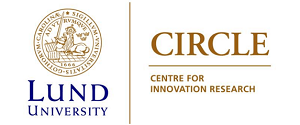No 2021/14: Framing energy choices in consumer decision-making Evidence from a random experiment in Sweden
Peter Gustafsson (), Peter Nilsson (), Lucinda David () and Antonia Marañon ()
Additional contact information
Peter Gustafsson: Lund University, Postal: Sweden
Peter Nilsson: GfK, Postal: Denmark
Lucinda David: CIRCLE, Lund University, Postal: CIRCLE - Centre for Innovation Research, Lund University, PO Box 117, SE-22100 Lund, Sweden
Antonia Marañon: CIRCLE, Lund University, Postal: CIRCLE - Centre for Innovation Research, Lund University, PO Box 117, SE-22100 Lund, Sweden
Abstract: Sustainability transitions literature is largely missing the point of view of consumers. This is problematic in efforts to understand how sustainable forms of energy diffuses where consumers are understood as active players in embedding energy efficient technologies in their homes. It remains unclear how consumers make energy-relevant decisions and what constitutes this decision-making process. We address this gap by conducting a random experiment asking consumers to make choices regarding solar energy technologies based on a set of options. Options are framed in either a subtractive or additive way to test how consumers process these choices, whether the type of framing matters in encouraging pro-solar energy behavior, and which solar technologies are preferred. We hypothesize that subtractive framing of energy-relevant choices leads to more options being selected than additive framing, that the type of option framing matters in shaping consumer preferences, and that the framing affects the transition probabilities in the decision-making process. Results show that consumers are susceptible to option framing when making energy-relevant decisions. Respondents were concerned primarily with costs when options were framed additively but exhibited decision difficulties and more pro-solar energy transition behavior when options were framed subtractively. This paper demonstrates the sequential steps in decision-making under subtractive framing, which induces a willingness in consumers to embed more solar energy technologies into their households despite the cost, as opposed to additive framing. This paper contributes a representation of the cognitive process of energy relevant decision-making, empirical evidence on the potentiality of nudging consumers towards more pro-solar energy transition behavior, and the importance of framing tools in encouraging this behavior.
Keywords: additive and subtractive option framing; experimental design; Markov chain; final state distribution; transition probability; distance from initial model; anchoring
Language: English
26 pages, December 10, 2021
Questions (including download problems) about the papers in this series should be directed to Torben Schubert ()
Report other problems with accessing this service to Sune Karlsson ().
RePEc:hhs:lucirc:2021_014This page generated on 2024-09-13 22:16:05.

